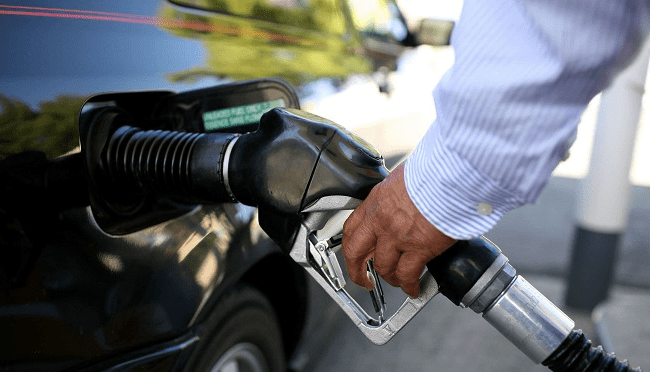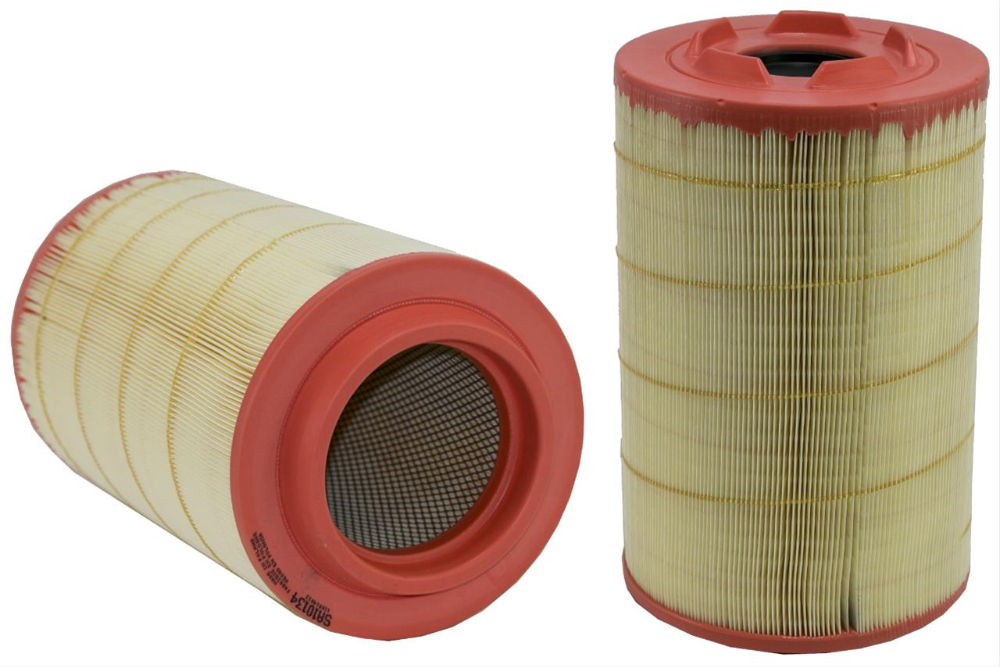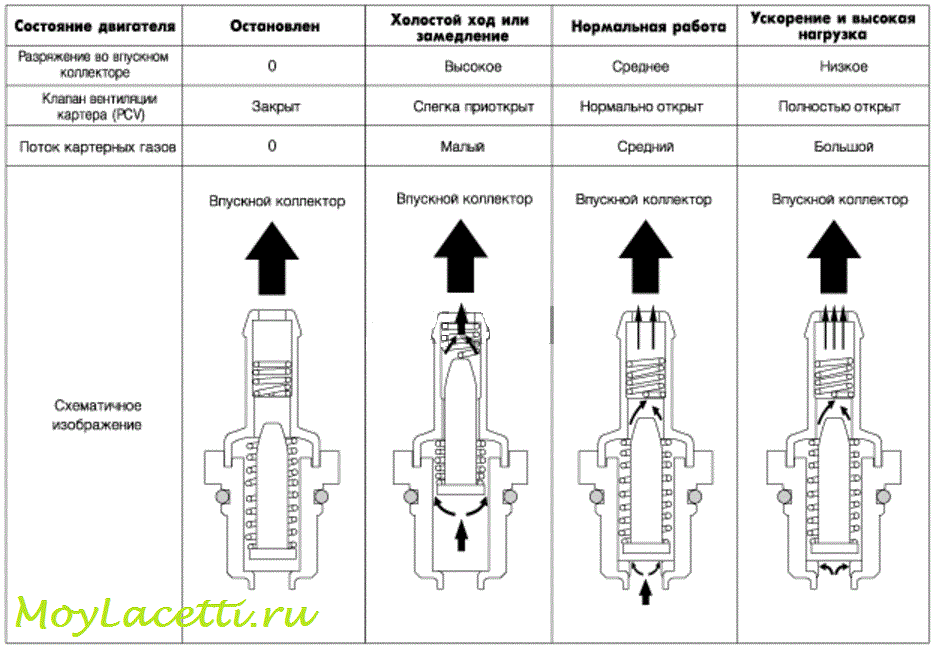
The smell of gasoline in the cabin
Content
- Causes of the smell of gasoline in the cabin
- Why does the cabin smell like gasoline?
- Leaky joints of the fuel level sensor
- Crack between tank and neck
- Fuel pump
- Fuel filter
- incorrectly tuned carburetor
- Absorber
- Loss of tightness of a cap of a gas tank
- Gas tank separator
- Spark plug
- Worn o-rings
- Clogged catalyst
- Fuel system damage
- Rear door seal
- Entry of gasoline into the cabin
- Low quality gasoline
- What to do after troubleshooting
The smell of gasoline in the cabin is not only a source of inconvenience, but also a real threat to the health of the driver and passengers. After all, these fumes can cause irreversible consequences in the body. Therefore, when a situation arises when the cabin smells of gasoline, you need to start identifying the breakdown and fixing it as soon as possible.
Usually, the reasons for the smell of gasoline in the cabin are incomplete tightness of the gas tank cap, a leak (even a slight one) in the gas tank, gasoline leakage in the fuel line, at the junctions of its individual elements, damage to the fuel pump, problems with the catalyst, and some others. You can identify the problem yourself, but be sure to follow the fire safety rules!
Causes of the smell of gasoline in the cabin
To begin with, we simply list the main reasons why the smell of gasoline appears in the cabin. So:
- the tightness of the gas tank cap (more precisely, its rubber gasket or o-ring) is broken;
- a leak has formed from the gas tank body (most often it forms at the place where the neck is welded precisely to the tank body);
- gasoline flows from the elements of the fuel system or from their connections;
- the appearance of exhaust gases from the external environment (especially important when driving with open windows in heavy traffic);
- breakdown of the fuel pump (it lets gasoline vapor into the atmosphere);
- leaky joints of either the fuel level sensor or the submersible fuel pump module;
- additional reasons (for example, leakage of gasoline from a canister in the trunk, if such a situation takes place, gasoline getting on the surface of the seat, and so on).
In fact, there are many more reasons, and we will move on to their consideration. We will also discuss what to do in this or that case to eliminate the breakdown.
Why does the cabin smell like gasoline?
So, let's start the discussion in order from the most common causes to the less common. According to statistics, most often the owners of VAZ-2107 cars, as well as VAZ-2110, VAZ-2114 and some other front-wheel drive VAZs, face the problem when they smell of gasoline in the cabin. However, similar problems occur with Daewoo Nexia, Niva Chevrolet, Daewoo Lanos, Ford Focus, as well as on old models of Toyota, Opel, Renault and some other cars.
Leaky joints of the fuel level sensor
Leaky fuel system joints are a very common cause of a car smelling like gasoline. This is especially true for front-wheel drive VAZs. The fact is that under the rear seat of these machines is the junction of the fuel cells. To perform an appropriate revision, you need to raise the rear seat cushion, tilt the hatch in order to get to the mentioned elements. After that, tighten all threaded connections that relate to the fuel line.
If the tightening of the mentioned elements did not help, you can use the usual soaked laundry soap. Its composition is able to prevent the spread of gasoline, as well as its smell. Soap can even lubricate cracks in gas tanks or other elements of the fuel system, since the elements included in its composition reliably seal the joints. so, you can smear with soap all the connections of the fuel system under the hatch located under the rear seat of the car. Often, this procedure helps in cases where gasoline smells strongly in the cabin of a front-wheel drive VAZ car.
Crack between tank and neck
In most modern cars, the design of the gas tank consists of two parts - namely the tank and the neck welded to it. The welding seam is made in the factory, but over time (from age and / or corrosion) it can delaminate, thereby giving a crack or a small pinpoint leak. Because of this, gasoline will get on the inner surface of the car body, and its smell will spread into the passenger compartment. Such a defect is especially often manifested after refueling or when the tank is more than half full.
There are also models (albeit a little bit) that have a rubber gasket between the neck and the tank. It can also crumble over time and leak fuel. The consequences of this will be similar - the smell of gasoline in the cabin.
To eliminate this problem, it is necessary to revise the tank body, as well as look for fuel leaks on the tank body, as well as on the car body elements located under it. In the event of a leak, there are two options. The first is a complete replacement of the tank with a new one. The second is the use of the already mentioned softened laundry soap. With it, you can make a gap, and as practice shows, you can also ride with such a tank for several years. Which of these options to choose is up to the car owner. However, replacing the tank will still be a more reliable option.
An interesting and quite popular reason (especially for domestic cars) that the smell of gasoline appears immediately after refueling is that leaky rubber tube connecting the gas tank neck with his body. Or another similar option may be when the clamp connecting this tube and the gas tank does not hold well. During the refueling process, pressurized gasoline hits the rubber band and clamp, and some of the gasoline may be on the surface of the tube or said connection.
Fuel pump hatch
This situation is relevant for injection engines. They have a cap on the fuel tank, which holds the high pressure fuel pump and fuel level sensor, which are located inside the tank. Said lid is usually attached to the tank with screws, and there is a sealing gasket under the lid. It is she who can lose weight over time and let the evaporation of gasoline from the fuel tank pass. This is especially true if recently, before the situation when there was a smell of gasoline in the cabin, the fuel pump and / or fuel level sensor or fuel filter were repaired or replaced (the cover is often unscrewed to clean the coarse fuel mesh). During reassembly, the seal may have been broken.
Elimination of the consequences consists in the correct installation or replacement of the said gasket. it is also worth using an oil-resistant sealant. Experts note that the mentioned gasket should be made of gasoline-resistant rubber. Otherwise, it will swell. it is also noted that the smell of gasoline is especially pronounced after refueling with a leaky gasket on the gas tank. Therefore, it is also worth checking its geometric dimensions and general condition (whether it has dried out or vice versa, has it swollen). If necessary, the gasket must be replaced.
Fuel pump
Most often, the carburetor fuel pump skips gasoline (for example, on popular VAZ-2107 cars). Usually the reasons for its failure are:
- wear of the fuel gasket;
- failure of the membrane (the formation of a crack or a hole in it);
- incorrect installation of fuel line fittings (misalignment, insufficient tightening).
Repair of the fuel pump must be carried out in accordance with the reasons listed above. There are repair kits for repairing the fuel pump in car dealerships. Changing the membrane or gasket is not difficult, and even a novice car enthusiast can handle this job. It is also worth checking how the fittings are installed. namely, whether they are skewed and whether they have sufficient tightening torque. It is also worth paying attention to the presence of gasoline smudges on their body.
Fuel filter
Actual for carbureted cars, in which the mentioned filter is located in the engine compartment. Two options are possible here - either the fuel filter is very clogged and emits a fetid odor that is transmitted to the car interior, or its incorrect installation. Moreover, it can be a filter of both coarse and fine cleaning. In the first case, the filter is clogged with various debris, which actually emits an unpleasant odor. In addition, this situation is very harmful to the fuel pump, which works with excessive load. In carburetor ICEs, the fuel filter is located in front of the carburetor, and in injection engines - under the bottom of the car. Remember that you should not clean the filter, but you need to replace it in accordance with the regulations for each specific car model. In most cases, it is not allowed to drive with the filter installed for more than 30 thousand kilometers.
The second option is incorrect installation of the filter when there is a flow of gasoline before or after the filter. The cause of the situation may be a misalignment or insufficient sealing of the connections (clamps or quick-release fittings). To eliminate the causes of failure, it is necessary to revise the filter. That is, check the correctness of the installation, as well as the degree of contamination of the filter element. By the way, often with a clogged fuel filter on a carbureted car, the smell of gasoline appears in the cabin when the stove is turned on.
incorrectly tuned carburetor
For cars with a carbureted internal combustion engine, a situation may arise in which an incorrectly tuned carburetor performs excessive fuel consumption. At the same time, its unburned residues will seep out into the engine compartment, while evaporating and emitting a specific smell. From the engine compartment, vapors can also enter the cabin. Especially if you turn on the stove.
drivers of old carbureted cars often use a so-called suction regulator to increase gasoline in the carburetor to facilitate starting the internal combustion engine. Moreover, if you overdo it using suction and pump up excess gasoline, then its smell can easily spread into the cabin.
The solution here is simple, and it lies in the correct setting of the carburetor, so that it uses the optimal amount of fuel for its work.
Absorber
On those machines that are equipped with an absorber, that is, a gasoline vapor filter, (fuel pressure system with feedback), it is this unit that can cause the smell of gasoline. So, the absorber is designed to collect gasoline vapors that evaporate from the tank and do not get back in the form of condensate. Vapors enter the absorber, after which it is purged, the vapors are removed to the receiver, where they are burned. With a partial failure of the absorber (if it is clogged), some of the vapors can enter the passenger compartment, thereby causing a specific unpleasant odor. This usually appears due to the failure of the absorber valves.
If a vacuum occurs in the tank, a situation may arise when one of the rubber tubes through which the fuel flows is broken. Over time, it can simply crack, thereby passing gasoline in liquid or gaseous form.
failure of both valves located in the line between the absorber and separator is also possible. In this case, the natural movement of gasoline vapors is disturbed, and some of them may enter the atmosphere or the passenger compartment. To eliminate them, you need to revise them, and if necessary, replace them.
Some car owners, namely, owners of injection VAZ-2107, exclude one basic pipeline valve from the system, leaving an emergency one instead. As practice shows, often the base valve begins to etch and let gasoline vapor into the passenger compartment.
Loss of tightness of a cap of a gas tank
The tightness of the lid is ensured by a gasket located along its inner perimeter. Some (modern) lids have a valve that lets air into the tank, thereby normalizing the pressure in it. If the said gasket is leaky (the rubber has burst due to old age or mechanical damage has occurred), then gasoline vapors can come out from under the tank cap and enter the passenger compartment (especially true for station wagon and hatchback cars). In another case, the said valve may fail. That is, it can pass back vapors of gasoline.
The reason is relevant for a situation where there is more than half the volume of gasoline in the tank. During sharp turns or when driving on rough roads, fuel may partially splash out through a leaky plug.
There are two exits here. The first is to replace the gasket with a new one (or if there is none, then it is worth adding it to the plastic o-ring). It can be made independently from gasoline-resistant rubber, and put it on a sealant. Another way out is to completely replace the tank cap with a new one. This is especially true in case of failure of the said valve. The first option is much cheaper.
An indirect sign that it was the gas tank cap that has lost its tightness is that the smell of gasoline is felt not only in the passenger compartment, but also near it. namely, when driving with the windows open, the smell of gasoline is felt.
Gas tank separator
On some domestic front-wheel drive VAZs (for example, on the VAZ-21093 with an injection ICE) there is a so-called gas tank separator. It is a small plastic tank mounted above the fuel inlet. It is designed to equalize the pressure of gasoline in the fuel tank. Vapors of gasoline condense on its walls and again fall into the gas tank. A two-way valve is used to control the pressure in the separator.
Since the separator is made of plastic, there are cases when its body cracks. As a result, gasoline vapors come out of it, getting into the cabin. The way out of this situation is simple, and it consists in replacing the separator with a new one. It is inexpensive and can be purchased at most auto parts stores. Also, one way out, which, however, requires a change in the fuel system, is to eliminate the separator altogether, and instead use a modern plug with a valve on the neck, which lets air into the tank, thereby regulating the pressure in it.
Spark plug
namely, if one or more spark plugs were screwed in with insufficient torque, then gasoline vapors can escape from under it (them), falling into the engine compartment. the situation is also accompanied by the fact that not all fuel supplied to the candles is burned. And this threatens with excessive consumption of gasoline, a decrease in the power of the internal combustion engine, a decrease in compression, and cold start worsens.
In the event that the candles are loosely screwed into their seats, then you need to tighten them yourself, in parallel by diagnosing the spark plugs. Ideally, it is better to find out the value of the tightening torque, and use a torque wrench for this. If this is not possible, then you should act on a whim, but do not overdo it, in order not to break the thread. It is better to pre-lubricate the surface of the thread, so that in the future the candle does not stick, and its dismantling does not turn into a painful event.
Worn o-rings
We are talking about worn o-rings located on the injectors of the injection engine. They can wear out due to old age or due to mechanical damage. Because of this, the rings lose their tightness and allow a small amount of fuel to pass out, which is quite enough to form an unpleasant odor in the engine compartment, and then in the cabin.
This situation can lead to excessive consumption of fuel and a decrease in the power of the internal combustion engine. Therefore, if possible, it is necessary to replace the mentioned rings with new ones, since they are inexpensive, and the replacement procedure is simple.
Some modern front-wheel drive VAZs (for example, Kalina) occasionally have a problem when the sealing ring of the fuel line suitable for the injectors partially fails. Because of this, the fuel enters the ICE body and evaporates. Then the couples can get into the salon. You can correct the situation by performing a thorough audit to determine the location of the leak and replacing the sealing ring.
Clogged catalyst
The task of the machine catalyst is to afterburn the exhaust leaving the internal combustion engine with fuel elements to the state of inert gases. However, over time (during operation or from old age), this unit may not be able to cope with its tasks, and pass gasoline fumes through its system. thus, gasoline enters the atmosphere, and its vapors can be drawn into the passenger compartment by the ventilation system.
Fuel system damage
Vehicle fuel system
In some cases, there is damage to individual elements of the fuel system or a leak at their junction. In most cars, the fuel system is mounted on the bottom and often its elements are hidden from direct access. Therefore, to carry out their revision, it is necessary to dismantle the interior elements that interfere with direct access. Most often, rubber pipes and / or hoses fail. Rubber ages and cracks, and as a result, it leaks.
The verification work is quite troublesome, however, if all the verification methods listed above did not work to eliminate the smell of gasoline in the cabin, then it is also worth revising the elements of the car's fuel system.
Rear door seal
In most modern cars, the fuel filler neck is located on the right or left side of the rear of the body (on the so-called rear fenders). During the refueling process, a certain amount of gasoline vapor is released into the atmosphere. If the rubber seal of the rear door, on the side of which the gas tank is located, allows air to pass through significantly, then the mentioned gasoline vapors may enter the vehicle interior. Naturally, after this, an unpleasant smell will occur in the cars.
You can fix the damage by replacing the seal. In some cases (for example, if the seal is also not very worn), you can try lubricating the seals with silicone grease. It will soften the rubber and make it more elastic. An indirect sign of such a breakdown is that the smell of gasoline in the cabin appears after refueling. Moreover, the longer the car refuels (the more fuel is poured into its tank), the stronger the smell.
Entry of gasoline into the cabin
This is a fairly obvious reason that can occur, for example, when gasoline is transported in a canister in the trunk or in the passenger compartment of a car. If at the same time the lid is not closed tightly or there are dirt on the surface of the canister, including traces of gasoline, then the corresponding smell will quickly spread throughout the cabin. However, the positive news here is that the reason is obvious. However, eliminating the smell that has appeared is sometimes quite difficult.
Low quality gasoline
If low-quality fuel is poured into the gas tank, which does not completely burn out, then a situation is possible when vapors of unburned fuel will spread both in the passenger compartment and around it. Spark plugs will tell you about the use of low-quality fuel. If their working (lower) part has red soot, it is likely that low-quality fuel was filled.
Remember that the use of bad gasoline is very harmful to the car's fuel system. Therefore, try to refuel at proven gas stations, and do not pour gasoline or similar chemical compounds into the tank.
What to do after troubleshooting
After the reason is found, due to which an unpleasant gasoline aroma spread throughout the car’s interior, this very interior must be cleaned. That is, to get rid of the remnants of the smell, which are probably present there, since gasoline vapors are very volatile and easily eat into a variety of (especially cloth) materials, making themselves felt for a long time as well. And sometimes getting rid of this smell is not easy.
car owners use a variety of means and methods for this - fragrances, dishwashing detergents, vinegar, baking soda, ground coffee and some other so-called folk remedies. However, it is best to use chemical interior cleaning or ozone cleaning for this. Both of these procedures are performed in specialized centers using appropriate equipment and chemicals. Performing the mentioned cleanings is guaranteed to get rid of the unpleasant smell of gasoline in the interior of your car.

How to get rid of the gasoline smell
Is there an unpleasant smell of gasoline in the car interior? Getting rid of it is quite simple. There are 9 effective methods. To eliminate the gasoline smell: baking soda, vinegar, coffee. The most effective is... But first, identify the source Read more
Hack and predictor Aviator
remember, that gasoline vapors are very harmful to the human body. Therefore, if you detect the slightest smell of gasoline in the cabin, and even more so if it appears on a regular basis, immediately take a set of measures to find and eliminate the causes of this phenomenon. also do not forget that gasoline vapors are flammable and explosive. Therefore, when performing appropriate work be sure to follow the fire safety rules. And it is better to work outside or in a well-ventilated room, so that gasoline vapors do not enter your body.

